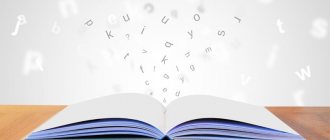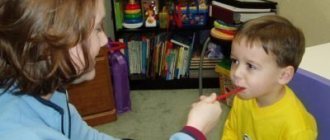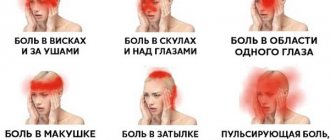Effective massages for stuttering in children
/ For diseases / Stuttering
Stuttering is a fairly common problem in children. This is especially true for younger children under 5 years of age. This disease is not characterized by damage to the brain and articulatory apparatus. Stuttering is mainly associated with neurotic problems, although sometimes it can also be physiological, due to the peculiarities of speech development in a child.
Currently, good results in the treatment of stuttering are achieved through a combination of psychotherapeutic, speech therapy and closely related alternative medicine.
The first step should always be the help of a psychotherapist who professionally works with this type of problem. It should be combined with general strengthening actions, several types of manipulations for stuttering in children, gymnastics (breathing, facial exercises), and special articulation exercises.
Types of massage for stuttering in children
Massage for stuttering in children is positioned as speech therapy. It is performed by a specialist along with certain speech therapy techniques in correctional classes. It usually occurs in combination with medication and physiotherapy.
The massage area includes the head, cervical region, shoulders and upper chest and back. With this type of influence, the speech therapist must know the structure of the disorders, the anatomy of the muscles of the articulatory apparatus, and the location of the nerves of the brain center.
The use of segmental and targeted types of influence for stuttering in children is common. A combination of them is also possible.
Segmental massage
A special feature of segmental massage for stuttering in children is its separate effect on a specific muscle that is responsible specifically for speech activity.
The room in which it is carried out must be comfortable for the child, always clean, warm and pre-ventilated. The speech therapist must have clean hands, without any damage or jewelry that could cause injury to the baby.
Segmental massage is usually performed every day for 2-3 weeks. The duration depends on the nature of the problem, symptoms and age of the child. The execution time starts from 5 minutes and reaches 20 minutes. In case of chronic stuttering, courses of intervention are usually repeated periodically.
Before starting the procedure, the speech therapist should help the child take a relaxing position and use words to help him calm down.
The optimal poses are those in which:
- The baby lies on his back, with his arms extended along his body and legs relaxed and straightened.
- The baby is in a semi-sitting position in a chair with a fairly high headrest.
In both cases, the doctor should be behind the head of the person being massaged.
The main methods of segmental influence are:
- Stroking. Always precedes the start of the procedure. During the process, it alternates with other procedures and completes the complex.
- Rubbing is a procedure aimed at activating blood circulation, enhancing metabolic actions in tissues.
- Kneading maximizes working processes in the muscles.
- Vibration or effleurage, depending on the degree of impact, increases or decreases tone.
- Strong pressure activates metabolic processes.
Acupressure
One of the most effective treatments is acupressure for stuttering. Its use has a positive effect on the speech center, allowing it to relieve excessive excitability. Also, acupressure allows you to restore speech impulses of the nervous system.
A significant advantage of this type of influence is its simplicity. Even parents can do it for their children at home, after a short internship with a specialist.
Acupressure for children is a fairly long-term treatment and you need to know that positive dynamics will occur no earlier than after 2-3 courses of procedures. Its effectiveness is in the right sequence. In total, the full course lasts 2-3 years.
For children, this type of intervention should be performed with relaxing music and evoke feelings of relaxation and calm.
General recommendations for a relaxing massage for stuttering in children:
- The impact is carried out smoothly and slowly.
- Relaxing meditative music is used in the process.
- The speech therapist can speak calming phrases.
- The massaging process should be accompanied by a feeling of warmth and relaxation in the child.
- It is necessary to carry out all procedures only with warm hands.
Source: https://detskiy-massaj.ru/pri-zabolevaniyah/zaikanie
Massage for children who stutter: modern techniques
Speech impairment in children is a serious problem that parents should pay attention to in time and take appropriate measures. Stuttering (in medicine the term “logoneurosis” is used) can occur in children at an early age.
Treatment of the disease is carried out by specialists in a comprehensive manner: speech therapy, psychotherapeutic techniques and even hypnosis are used.
Children who stutter need a massage to reduce facial muscle tension, improve the functioning of the speech center, and generally improve health.
The main causes of logoneurosis
Stuttering is a disorder of fluency of speech. During illness, the main thing is that the child does not develop logophobia (fear of expressing his opinion), since it will increase the severity of the disease and complicate treatment. Hereditary predisposition also influences the development of logoneurosis. Experts diagnose speech defects three times more often in boys than in girls.
Causes of stuttering:
- acute or chronic stress;
- genetic predisposition;
- damage to the central nervous system;
- complications after endocrine and infectious diseases;
- predisposition to epiactivity;
- early development or delayed psychomotor development;
- imitating a stuttering child (due to such “games” healthy children can develop a permanent speech defect);
- the child being in constant fear, misunderstanding on the part of the parents, lack of love and affection.
Doctors have found that choleric people are more prone to stuttering than phlegmatic people. The disease in children is often provoked by their parents: due to strict upbringing and increased demands on the baby, logoneurosis can develop
Doctors treating speech neurosis
Therapy for speech neurosis in childhood should be carried out with four specialists at once: a speech therapist, a psychologist, a psychotherapist and a pediatrician.
The pediatrician treats concomitant pathological processes, pays attention to strengthening the immune system, preventive measures, and advises parents if their children complain about their health.
Physiotherapeutic manipulations (electric sleep and massage) are effective for the disease. Doctors often recommend effective logomassage for stuttering, breathing exercises, and psychological training.
The psychologist seeks an approach to the child and learns about his fears. Only a doctor can examine the patient's mental health and find out the causes of stuttering. At an early age, consultations with a psychologist are carried out under the supervision of parents.
The speech therapist asks the child to undergo a series of tests and do several test exercises. Classes with this specialist will allow you to reduce the number of cramps in the laryngeal and articulatory muscles in a short period of time.
An appointment with a psychotherapist is needed so that the child can get rid of fear and discomfort while communicating with his peers (due to stuttering, the child often develops complexes). Consultations with a doctor will help you get rid of complexes and feelings of inferiority.
The benefits of massage for stuttering
A special massage of the head, cervical region, collar area, back, chest and shoulders has a positive effect on articulation. The benefits of this procedure are visible after several sessions, but sometimes 1-2 courses of treatment are required.
The advantages of massage for logoneurosis are:
- activation of metabolic processes in the body;
- increase or decrease in muscle tone;
- improving blood circulation;
- increased metabolism;
- formation of correct speech skills;
- prevention of disease relapse;
- complete elimination or minimization of speech defects.
The procedure has no contraindications, and having mastered the correct massage technique, parents will be able to do it to their child at home.
The most common types of massage for children's stuttering
Speech therapy massage of certain areas of the body for speech impediments is performed by an experienced massage therapist using certain techniques and techniques. Speech therapy massage for stuttering in children is complemented by physiotherapeutic and drug treatment.
There are two main types of therapeutic massage for logoneurosis: segmental and acupressure.
With segmental massage, the speech therapist acts on a specific muscle that is responsible for speech activity. It is advisable to carry out the manipulation daily for 14-20 days. The duration of the course directly depends on the symptoms, age of the patient and diagnosis. One doctor’s appointment takes from 5 to 20 minutes.
Acupressure massage is not inferior in effectiveness to segmental massage. The advantages of such an effect on the child’s body include relaxation of the speech center and the removal of excess excitability. With the help of procedures, speech impulses of the nervous system are restored.
The advantage of the massage treatment method is its ease of implementation. Parents, after mastering the technique and techniques of massage, can give it to their baby in the comfort of their own home. It will take 1 to 3 years for children to fully recover.
Modern methods, tools and techniques for speech therapy massage
Speech therapy massage for stuttering can be both the main treatment method and an auxiliary one.
Logomassage classification:
- traditional (during the manipulation, the specialist strokes, rubs and kneads the patient’s legs and arms);
- point (speech therapist acts on biologically active points);
- probe (carried out using instruments - probes);
- segmental-reflex massage (classical techniques and methods are used, the doctor massages certain segments and zones).
Logomassage is prohibited for herpes, gingivitis, stomatitis, enlarged lymph nodes, skin rashes, inflammation, conjunctivitis, somatic and infectious diseases
How to do acupressure in children who stutter
During acupressure for stuttering, the doctor presses with the pads of his fingers on certain parts of the body (performed in a circular motion). During the manipulation, points located on the back, legs and face are activated. Doctors call acupressure soothing because of the smoothness of the pressure.
The masseur performs a massage with three fingers: thumb, middle and index. After pressing, rotational movements are made for half a minute (the pressure gradually increases).
When massaging near the mouth, you should ask the child to open it slightly. When treating the larynx, the baby will need to pronounce vowel sounds. The goal of acupressure is maximum relaxation. It is not recommended to eat or drink before the procedure.
Bioactive pressure points for acupressure for stuttering
When exposed to bioactive points during logoneurosis, the child’s psycho-emotional health is normalized, the muscles that are responsible for the respiratory, articulatory and articulatory apparatus are relaxed.
Nei Guan points are located in the wrist area.
The Tian Jing points are located in the elbow area.
"He-liao", "Ying-xiang" and "Show-go" are on the face.
The points “Tzu-san-li” and “Du-bi” are concentrated near the knees.
On the back there are points “Fei Shu”, “Hsin Shu”, “Tian Liao”, “Fen Men” and others.
Segmental massage for speech defects: technique
Segmental effects on the baby’s body have a beneficial effect on the entire body. Before the manipulation, the child sits in a position that is comfortable for him and tries to relax. He needs to stretch his arms along his body and completely relax his legs. The massage can also be carried out when the baby is sitting in a chair, with the head slightly tilted on a special soft headrest.
The specialist performs segmental massage while standing behind the patient’s head. During the procedure, several basic techniques are used: rubbing, kneading, stroking, tapping, vibration, alternating pressure.
Speech therapy massage for stuttering:
Speech therapy massage for stuttering, Shevtsova E. E. Speech therapy massage | stutter | speech disorders How to help a child with stuttering Speech therapy massage for stuttering in children. Speech therapy massage for children at home.
Source: https://reabilitilog.ru/metody/massazh/massazh-detiam-pri-zaikanii.html
Speech therapy games and activities for children who stutter
Author:
Ganshu Svetlana Ivanovna
speech therapist
BU "Rehabilitation city of Surgut"
1st category, 20 years of experience
Play is the main activity of a preschool child. For children, play is study, play for them is work, play for them is a serious form of education. Children's games reflect impressions received from the surrounding life, from their favorite books, and develop relationships with peers and adults. Games contribute to the development of a sense of collectivism, imagination, initiative, determination, intelligence, and organization. In games, children’s ideas about the life around them are clarified and their horizons are broadened; perception, thinking, attention, speech, and necessary movements develop. Games create a cheerful and joyful mood for the child.
For children of the fifth year of life, the games are simple in plot, the number of roles and playing time are small. By the age of six, play ideas are associated not only with direct experience - they go beyond life in the family and garden. Children willingly play with the labor of construction workers, with the railroad, with driving ships, and transporting passengers on buses, trams, and airplanes. They bring elements of creativity and fantasy into their games. The role of speech increases, the word helps the child enter the role, games become longer and more interesting.
By the age of seven, children have noticeable persistence in achieving their intended goals, new ideas appear, and they are captivated by moments of competition and games of wits.
The incorrect speech of stuttering children and the characteristics of their behavior are reflected in their participation in play activities. Awareness of their shortcomings and possible fear of speech makes it especially difficult to include such children in the game. These children are timid and do not know how to set a goal for themselves in the game. They often act as spectators in games or take on subordinate roles. In cases of severe stuttering, children simply refuse to play with their peers. But it happens on the contrary, children are distinguished by increased imagination and uncriticality of their behavior.
A feeling of personal inferiority can give rise to an incorrect attitude of a stuttering child towards a group of peers (feelings of resentment, humiliation or even embitterment), depriving him of a joyful mood.
There are different types of games: didactic, active, creative (construction games, dramatization games, role-playing games).
In organizing and managing children's games, the following general rules can be identified that must be adhered to at all times:
1. The game should bring joy. Do not force the child to play, but create conditions for the emergence of interest, the manifestation of cognitive and creative activity.
2. Revive the game by introducing new content and rules, reading a fairy tale, story, making models, and let the children fantasize, come up with other games, and play new roles.
3. Create a relaxed atmosphere in the game. Do not restrain children's physical activity. Let the children jump, run, crawl, and sit on the floor while performing game actions.
4. Do not force gaming materials, objects, or aids on children. Let them lie freely. It’s good when children prepare game attributes themselves, on their own initiative.
5. Praise your child for his successes, especially if he has successfully mastered the actions for the first time and fulfilled a responsible role.
6. Observe and analyze how the child follows the rules of the game, roles, and game actions. Record his achievements, failures and disappointments to help him master play behavior.
7. Build your relationships with children on mutual trust, show examples of attentive attitude towards people, mutual assistance, politeness, and culture of behavior.
Didactic games. These are educational games. The educational task is disguised; the motive for its implementation is the child’s desire to play and perform certain play actions. Play action is a manifestation of children’s activity for play purposes. The forms of implementation of play action can be: various play manipulations with objects and toys - picking, folding and unfolding them, stringing, rolling; “beginning”, which creates a playful mood in children (using in the form of a fairy tale, song, story, introducing a magic toy, secret letter); carrying out and searching for and finding the right toy, object, number, sound, word; making and guessing riddles; fulfilling a specific role; competition (individual and collective; special game movements, clapping, jumping, speaking out loud, imitation of movements. In didactic games, the methodology for conducting them, the way of performing game actions, and the correct use of gaming equipment in them are observed.
In the process of didactic games and speech therapy classes, children develop a leisurely pace of speech, its sonority and expressiveness; sound pronunciation improves, word formation improves, vocabulary increases. Musical and didactic games are very useful for the development of auditory attention and phonemic hearing.
Didactic games contribute to the development of children’s mental activity, education of the moral aspects of the individual, conscious assimilation of the world around them, the formation of mental qualities: attention, memory, observation, intelligence, and brings emotional joy to children. Didactic games also contribute to artistic education - improving movements. Expressiveness of speech, development of creative imagination, bright, heartfelt portrayal of the image.
Didactic games with children who stutter promote their ability to consistently and logically express their desires, thoughts, and the ability to behave correctly during a conversation. The task of the speech therapist is to relieve tension during the game when answering questions, get rid of motor and speech tricks, and develop sociability.
In didactic games, children who stutter learn to focus on their correct speech, learn to evaluate their own speech and the speech of their peers. And at the same time, children maintain a cheerful, joyful mood and confident behavior during games. Didactic games are varied in form and content, and can be used with different tasks at different stages of speech therapy classes with the correction of incorrect speech with subsequent and simultaneous development.
Outdoor games have a beneficial effect on the health and physical development of children. They develop the child’s body, useful movements and dexterity, organize his behavior, cultivate endurance, courage, dexterity; They bring excitement and cheerfulness into the child’s activities, and bring joy, as they fulfill his need to frolic and run around.
Children of the fifth year of life must learn to follow certain rules in games such as “Find yourself a mate”, “Bear in the forest”, “Sparrows and a car”, “horses”, “Sitting, sitting bunny”, etc.
For children of the sixth year of life, the following are recommended: “Put on the ring”, “Ball in the air”, “Smooth circle”, etc. Games with elements of competition: “Whose team will get together sooner”, “Snow circles”, etc. Games are accompanied by words and singing: “We are funny guys”, “Dashes”, “Ivan, Ivan”.
By the age of seven, children themselves organize games: who should lead, who will be who in the game, making sure that the rules are followed. Every child should be able to organize a game and be a leader. Games with elements of competition are used (“Catch up with your mate”, “Lay out all the pebbles”, etc.), rules are introduced that require children to be patient (“Find and remain silent”, “Sly Fox”, Burners”).
Children who stutter often experience various deviations in the motor sphere: stiffness of movements, lack of composure, clumsiness, incoordination of movements. Therefore, the importance of outdoor games for them is great: children who stutter improve the necessary movements and learn to perform in group games. Verbalized outdoor games, accompanied by words and verbal communication, are of particular importance for them. In speech therapy practice, these games are called speech therapy rhythmics.
Verbalized outdoor games help children develop proper breathing and voice, sound pronunciation, and coordination of the tempo of movements with speech. For example: bending his arms at the elbows, the child imitates a running steam locomotive: oo-oo-oo..., inhale and again: oo-oo-oo or chuh-chukh-chukh... and again chuh-chukh-chukh; the carriages knock: so-so, so-so and again: so-so, so-so...
Imitating sawers, they make appropriate movements with their hands, the saw squeals: vzh-vzh-vzh; inhale and vzh-vzh-vzh again...
Mosquitoes fly around the room: z-z-z-z; inhale and again: s-z-z-z...
Knock-knock-knock - children hammer an imaginary nail, drip-drip-drip - “it’s raining”, children shake their hands.
Verbalized outdoor games and exercises are used in the future to conduct speech exercises and switch to other types of activities.
Creative games and dramatizations. A characteristic feature of these games is that in them children have the opportunity to maximally express their ideas, fantasize, convey all the variety of impressions about the reality around them, and use their experience and knowledge.
One type of creative play is playing with building materials. These games promote the development of spatial concepts, concepts of shape, size, quality of material and structures being constructed; develop perseverance, purposeful action, and concentration.
Children of the fifth year learn to make simple buildings on their own. They must know what they want to build, be able to select the necessary parts by size, color, and shape, using a sample or experience.
By the age of six, children reproduce familiar objects, cars, buildings. made according to a drawing, diagram, assembled from “Constructor” parts. Children have a desire to decorate their buildings beautifully.
By the age of seven, the complexity of the buildings becomes even more complex. Train stations, multi-storey buildings, metro stations, and bridges are built from Architect building material. The ability to reproduce buildings using a visual model, from memory, from diagrams, drawings, or from verbal descriptions is consolidated.
Games with building materials are used in speech therapy classes. At first, this will be the child’s conjugate-response speech, a description of individual actions, then answers to questions, then he will independently
accompanies with speech his first simple and then more complex actions. The most difficult form of speech for a stutterer will be preparatory speech. In this case, the child, without starting the construction, consistently tells how he will build. From what material, what first, what next, for what, etc.
Dramatization games are played with children in a unique and interesting way. In them, children reproduce the content of their favorite fairy tales, the behavior of familiar characters, enthusiastically portray the characters in fairy tales, their characteristic movements, and conduct dialogues. Dramatization games are not used from the first lessons, so as not to provoke stuttering. First, they read the chosen fairy tale reflectively, ask the child questions to clarify the content, memorize it, and practice movements characteristic of the characters. And only after he successfully completes these tasks can he move on to the game. To facilitate the child’s speech and behavior in play, it is necessary to give examples of correct, intonation-expressive speech of the characters in the fairy tale, show characteristic movements in the developing plot of the fairy tale, use tape recordings, and filmstrips.
Role-playing games occupy a special place among creative games. If in staged games a stuttering child learns to speak and behave using ready-made models, then in role-playing games his degree of independence increases significantly. In these games, children generalize their experiences and impressions and, based on them, learn to use correct speech in the most diverse conditions close to their everyday life.
Children of the fifth year of life play with family, children's parties, on various trips and travels, play with dolls, through actions with which they convey what they know about their peers, adults, and their relationships. In the sixth year of life, children in their games, trying to imitate adults, reproduce what mom and dad do, play in the store, their street, and distribute roles. By playing the roles of adults, children learn to be neat, persistent, organized, to be kind and caring, and acquire the qualities necessary for study and work. By the age of seven, the themes of role-playing games include: construction, school, family, transport, etc. In a role-playing game The main thing for a child is the manifestation of his needs and abilities, which develop in the game - the need for an assistant, a comrade with whom you can share, empathize, with whom you need to help, protect him, listen to his advice. If a child is withdrawn, timid, disadvantaged by the consciousness of his own inferiority, bitterness, etc., role-playing games can and should become for him that preliminary school in which his relationships with others will be normalized, a feeling of correct assessment of his abilities, his roles in the team. By reflecting moments of his activity in the game, the child trains his correct speech and behavior in situations that are very close and necessary for him. Games psychologically prepare him for correct behavior, speech and relationships in life situations. Any role-playing game requires preliminary preparation, in which it is important to interest the child in the game, determine the tasks and sequence of the game
(programming the child’s behavior, relationships, speech), choose and prepare the conditions for the game, give the child an example of fulfilling the role that he has to play. Themes of role-playing games should be different and close to the child. You can play out the relationships and behavior of the family (who does what at home after work), behavior patterns at the table; inviting guests; at an appointment at the clinic; talking on the phone; walk (intended); in a store, at the theater, matinee. This is not a complete list of game topics that can be offered for use in speech therapy classes.
In speech therapy classes, role-playing games are used only when the speech therapist is convinced that the child can freely answer questions, ask them, and make simple retellings. At first, the adult takes the leading role in the game. He organizes the game and asks questions. As the child’s free speech skills are consolidated, the roles in the games change. At the last stages of speech therapy classes, children themselves organize the game, act as leaders, evaluate its results, and the speech therapist only sets tasks, directs and controls the game.
What is the importance of games for children who stutter?
1) training and consolidation of correct speech and behavior skills in children takes place in difficult conditions;
2) games serve as a necessary bridge for transferring new speech skills from special conditions to ordinary conditions;
3) in games, the child acquires the skill to properly behave in speech situations that are different for his activity, he develops the correct attitude towards others and towards his place in the team.
Literature
- Reader on speech therapy. Volume 1 /Under. ed. Volkova L.S. - Moscow: Vlados Humanitarian Publishing Center, 1997. — 560s.
- Rozhdestvenskaya F.I. Games and exercises to correct stuttering. – M.: Education, 1978. – 64 p.
- Seliverstov V.I. Stuttering in children. - Moscow: Education, 1972. - 160 p.
“Certificate of publication in the media” Series A No. 0002492
Barcode (receipt number) 62502671067554 Sent date April 11, 2014
Share
Massage for stuttering in children: acupressure, segmental, technique
Speech therapy massage for stuttering in children is prescribed by a pediatrician, both as a radical treatment and as part of a set of additional measures aimed at eliminating the speech defect. The procedure is carried out by a specialist in correctional classes using professional speech therapy methods. Drug treatment and physiotherapy are carried out in parallel.
The most common types of treatment for stuttering in children are segmental and acupressure massage. The combination of both options is also successfully practiced and gives positive results.
Treatment of stuttering with massage
Speech impairment in children, stuttering, most often occurs at the age of 3-5 years. The causes of the disease in each case are individual, often of a neurotic nature. Treatment for stuttering in children can only be prescribed by a doctor. The sooner parents seek help, the sooner speech will be restored.
One of the most common types of influence on speech articulation is massage. A tactile effect is projected onto the back, head, and cervical region; the collar area, shoulders, and part of the chest are affected. Massage for stuttering, in addition to its general strengthening effect, has a positive effect on the activity of the speech center and relieves excess tension from the muscles.
There are almost no contraindications to this procedure; it can be performed on patients of any age group; positive dynamics are observed after the first course. Simple rules for communicating with a child who stutters will help get rid of the disease, and a detailed study of the technique of therapeutic massage and applying it in practice will speed up the recovery process.
Spot impact
Acupressure gives really good results. The main advantage of this type of treatment is its ease of implementation. Parents will be able to do acupressure massage on their own under normal conditions at home after a short internship with a professional or watching a special video that describes in detail the technique, sequence of actions and contact points are indicated.
A serious attitude towards long-term treatment, patience and understanding on the part of adults are necessary conditions for the recovery of a small patient. The degree of speech impairment in children, the form of stuttering, may differ, and accordingly, the effect of influencing acupuncture points is also different.
The essence of acupressure is as follows:
- Pressure is performed using the fingertips in a circular motion;
- 17 points are activated, which are located on the back and face;
- One course consists of 15 procedures;
- The first sessions are held daily, then every other day;
- You will need to undergo a massage course four times in a year.
Parents need to know that if there is an improvement after the first course, this does not mean that the treatment is finished. The specified amount must be observed to consolidate the result.
And in the case when the long-awaited improvement is not observed, you should be persistent and not fall into despair.
There are cases when stuttering intensifies between courses, then there is no need to take a temporary pause, but after completing one course, immediately begin the next one.
Execution technique
This method of applying massage is called “soothing”. Pressing on the point is done with the fingertips slowly and very smoothly. Use your thumb, middle or index finger. Then rotational movements are made clockwise for 30 seconds with a gradual increase in pressure.
You cannot press the contact point until a hole is formed on the body, this is wrong. After the impact on the point has weakened, pressure should be resumed. Contact thus occurs three or four times over a five-minute period. It is important to remember that sharp pressing and jolts are unacceptable.
Finding the correct point where the pressure is applied is also very important. The first time you should feel it with your fingertip and press. The child at this moment will experience an unpleasant sensation of aching or even pain.
The fact confirms that the point is marked correctly, but the subsequent movements of the massage therapist should be gentle and careful. If the patient becomes dizzy, tactile manipulation should be stopped.
When the points near the mouth are massaged, you need to ask the baby to open it slightly, and when the larynx is being treated, it will be better if the child utters a vowel sound. Maximum relaxation during the session is the ultimate goal. It is not recommended to do the procedure immediately after eating or on an empty stomach. Coffee and strong tea before the start of the session are also contraindicated.
Segmental massage
The essence of this procedure is as follows: an effect is performed on the muscle that is responsible for speech in children. It must be done every day for two or three weeks. This type of influence, like the previous one, effectively helps with stuttering.
The period of treatment, in this case, depends on the age of the patient, the severity of symptoms and the nature of the problem. You should start with five minutes, gradually increasing to twenty.
If stuttering is chronic, treatment will have to be repeated.
Conclusion
At the first signs of illness, parents should take action. A careless attitude towards the identified problem is unacceptable, since due to a speech defect the child can receive severe psychological pressure, which will later result in serious personal complexes. In order not to traumatize the child’s vulnerable psyche, adults should take care of a warm and friendly atmosphere around them.
- Recommended reading: logoneurosis in children
At the initial stage of treatment, you may need the help of a psychotherapist. Further, speech restoration is carried out by such specialists as a speech therapist, pediatrician, and physiotherapist. In most cases, it is possible to restore correct speech without stuttering and long pauses in conversation, and preventive measures to prevent speech defects will make it possible to avoid relapse in the future.
▼We RECOMMEND YOU TO STUDY▼
Source: https://LechenieDetej.ru/lfk-i-massazh/massazh-pri-zaikanii.html
Acupressure for stuttering: main points and technique
Recently, to treat stuttering, specialists are increasingly resorting to the method of acupressure - shiatsu.
Stimulation of specific acupuncture points relieves increased irritability of speech centers and helps normalize impaired speech.
In combination with consultations with speech therapists and therapeutic procedures, reflexology gives the most noticeable effect.
What is stuttering
Stuttering is a common speech disorder that occurs as a result of muscle spasms that regulate the activity of the speech apparatus.
This process is characterized by impaired breathing, disruptions in the rhythm and fluency of speech, changes in the pitch and strength of sound.
The nature of the origin of stuttering is complex and heterogeneous. In addition to disorders of speech and general motor skills, people experience stiffness and angularity of movements, general muscle tension, or, conversely, excessive motor nervousness.
They are characterized by shyness, increased irritability, a feeling of depression, and also a fear of entering into dialogue. With age, speech disorders tend to intensify.
Often the cause of stuttering is psycho-emotional trauma suffered at an early age. Deep fear or conflict between parents does not always contribute to a breakdown of the speech apparatus, but predisposes to further disorders. The following factors may contribute to the occurrence of stuttering:
- damage to the cranial brain;
- difficult pregnancy, accompanied by stress;
- tendency to nervous diseases;
- long-term infectious and somatic diseases with fever;
- chronic stress - quarrels in the family, lack of love and affection, problems with education;
- hereditary predisposition.
Can acupressure help with stuttering?
Shiatsu in the treatment of stuttering helps to achieve a calm and relaxed state of the body, which helps eliminate speech impairment and restore it. The duration of treatment consists of several courses and can take months or even years.
The first and second courses must be completed with an interval of at least two weeks, between the second and third cycles - from 3 months to six months. In the future, massage cycles will be renewed every six months for two to three years.
The course is presented in fifteen sessions: the first 3 procedures are carried out every day, further ones - every other day.
The result of acupressure is determined by the degree of speech disorder and the form of stuttering. Sometimes positive dynamics are observed after the first course, but you need to continue the procedures to consolidate the results. In severe cases, improvement does not occur even after the second or third session. It is important to be patient and continue the massage.
Attention! During pauses between courses of acupressure, symptoms of stuttering may intensify. In this situation, the next course should be started without waiting for six months.
When correcting stuttering using the shiatsu method, two motor techniques are used:
- Kneading is a rotational movement with pressure at a frequency of 30-60 rotations per minute, while the finger is strictly fixed on the point and does not move.
- Stroking is a slow and continuous circular movement with the pad of the index, thumb or middle finger in a biologically active zone.
Shiatsu acupressure for stuttering can be used by a person of any age category (see age-related makeup). His skills are easy to understand and easy to use at home.
Bioactive pressure points for acupressure for stuttering
By influencing bioactive points during stuttering, it is possible to normalize the psycho-emotional state of a stutterer, relax the muscles responsible for the activity of the vocal, articulatory and respiratory apparatus, and generally strengthen the protective functions of the body.
Let's consider bioactive points of influence:
- Point 1 (da-lin) - located on the inside of the arm, in the wrist area in the middle of the tendons. Has a symmetrical point. Take a sitting position and place your hand on a hard surface, palm up, and massage the area alternately on the right and left.
- Point 2 (Nei Guan) – located on the front of the forearm, 2 cun above the midline of the wrist, in the middle of the tendons. Symmetrical. Stimulate in the same position as point 1. (1 cun is a Chinese inch equal to 3.73 cm.)
- Point 3 (tian jing) is a point concentrated on the back shoulder plane, 1 cun above the level of the elbow straight arm. Sit down and lower your hand, influence the zone first on the right, then on the left.
- Point 4 (zu-san-li) – is located in the lower leg region, 3 cun below the level of the kneecap and 1 cun to the side from the front side of the tibia. Has a symmetrical point. In a sitting position, stretch your legs and massage the areas together on both sides.
- Point 5 (xin-shu) is a symmetrical point, concentrated in the back area, 1.5 cun from the posterior median vertical at the level of the space between the spinous processes of the fifth and sixth thoracic vertebrae. While sitting, lean forward slightly (or take a position lying on your stomach) and stimulate the points on the left and right at the same time. Movements must be carried out with the help of another person.
- Point 6 (he-liao) - located in the face, in the fossa above the zygomatic arch at the beginning of the auricle. Symmetrical. While sitting, rest your elbows on a hard surface and massage the points together on both sides.
- Point 7 (san-yin-jiao) – a point in the shin area 3 cun above the medial malleolus, has symmetry. Massage points on both sides simultaneously in a sitting position.
- Point 8 (le-que) - concentrated in the forearm area, in the notch of the styloid process of the radius, 1.5 cun above the midline of the wrist. Has symmetry. Place your hand on the table and massage the points, alternating right and left.
- Point 9 (ya-men) is a point that does not have symmetry and is located in the scalp, on the back plane of the median horizontal. While sitting, tilt your head slightly and stimulate the bioactive zone with rotational movements.
- Point 10 (hou-shi) is a symmetrical point in the area of the hand on the line of connection between the back and palm, above the head of the fifth metacarpal bone. Sit down and put your hand on the table, palm down, clasp your fingers into a fist. Work by alternating points and pressing deeply on them for about 30-60 seconds.
All movements must be carried out with the fingertips strictly clockwise. Press on the acupuncture point smoothly and slowly for 30 seconds, gradually increasing the pressure. Next, you need to loosen the pressure without removing your finger, and press harder again. Resume movement 3-4 times for 4-5 minutes.
Attention! When doing acupressure for stuttering, to detect bioactive zones, you need to feel the intended place with your fingertip and apply pressure. Acupuncture is found when a feeling of aching occurs. During the massage, no pain or specific aches should arise.
Shiatsu acupressure massage is an optimal addition to basic treatment for stuttering prescribed by a specialist. To achieve a positive result, it is recommended to avoid psychological trauma that can aggravate the disease, and at the same time work diligently with a speech therapist.
kosmetsovet.com
Self-massage for stuttering – Speech therapist’s virtual office
SELF-MASSAGE TECHNIQUES TO ELIMINATE STUTTERING
1. GENERAL INFORMATION
Massage is performed to relieve tension and stiffness of speech and facial muscles, and vice versa, respectively, to increase the tone of weak and flaccid muscles.
To relieve tension from your face and relax it, you can use the so-called self-massage. Here we will get acquainted with its two types: hygienic vibration.
Hygienic massage
It is performed by stroking, which activates the nerve endings located close to the skin. This massage performs a dual role: it relieves tension and stiffness of the facial and facial muscles and increases the tone of these muscles if they are weak.
Vibration massage
This is done by vigorous tapping, which activates the work of nerve endings located deeper in the thickness of the skin. Self-massage causes a moderate expansion of blood vessels and has a beneficial effect on the nervous system. In case of pronounced tension in the muscles of the articulatory apparatus (spastic conditions), it is necessary to use massage techniques aimed at relaxing it. Relaxation of the muscles of the neck, face and lips is done by superficial stroking.
RECOMMENDATIONS
————————————————————————–
- The skin of the massaged parts of the body and hands should be clean.
- All movements should be carried out in the recommended directions.
- The muscles being massaged should be relaxed.
- The massage is done slowly and smoothly.
- Massage should be combined with myogymnastics.
- The duration of the massage should not exceed 2-3 minutes at a time.
- The movements are carried out with a straightened hand, the first finger is abducted, the rest are bent. The applied force should not cause the skin to mix.
- Each movement is repeated 4-6 times.
- Massage is not recommended for respiratory diseases, high temperature, or skin rashes.
2. RELAXING THE NECK MUSCLES
Relaxing the neck muscles reflexively relaxes the muscles of the root of the tongue.
Exercise 1.
Slowly stroke your neck from top to bottom in the throat area with the palm of your right or left hand.
Exercise 2.
Slowly stroke the neck at the same time with the palms of both hands from above from the parotid area of the face along the side surfaces of the neck to the armpits.
Exercise 3.
Place both hands on the back of the neck, close to the back of the head (the tips of the fingers touch each other). Hands slowly slide along the sides of the neck to the armpits.
3. RELAXING THE FACIAL LABIAL MUSCULATE USING THE STROKING METHOD
Movements are performed at a slow pace. Direction of movement:
- from the middle of the forehead to the temples;
- from the middle of the forehead to the ears;
- from eyebrows to scalp;
- from the back of the nose to the ears;
- from the middle of the upper lip to the ears;
- from the forehead line down through the face to the neck;
- from the earlobes along the cheeks to the wings of the nose;
- from the middle of the upper lip to the chin;
- stroking with your fingertips around the eyes (with diverging movements from the middle of the forehead - and again to the middle);
- along the upper lip from the corners of the mouth to the middle;
- along the lower lip from the corners of the mouth to the middle;
- stroking the nasolabial folds from the wings of the nose to the corners of the mouth;
- light tapping of lips.
4. RELAXING THE
TONGUE Exercise 1.
Vibration with two index fingers of both hands at the angles of the jaw (for 15 seconds).
Exercise 2.
Patting, stroking, vibrating (for 15 seconds) the tongue with a wooden spatula, which is placed on the tip of the tongue.
5. VIBRATION (TAPPING) MASSAGE WITH SOUND
Exercise 1.
Tap your forehead with the fingertips of both hands from the middle of your forehead to your ears and at the same time pull out loud the sonorant consonant
m
.
Repeat 4-6 times. Exercise 2.
Tap the upper part of the face with the fingertips of both hands from the back of the nose to the ears and at the same time, out loud, as you exhale, alternately sonorant m
and
p
.
Repeat 4-6 times. Exercise 3.
Tap the upper supralabial space with the fingertips of one hand and at the same time pull out loud the fricative consonant v as you exhale.
Repeat 4-6 times. Exercise 4.
Tap the space with your lower lip with the fingertips of one hand and at the same time pull out the consonant
z
. Repeat 4-6 times.
Exercise 5.
Tap the fingertips of one or both hands on the top of the chest and at the same time pull out loud the fricative consonant g
or sonorant
m
.
Repeat 4-6 times. Exercise 6.
Tap the lateral part of the chest with the ribs of the palms of both hands, starting from the bottom and upward, and at the same time pull out loud the sonorant m.
Repeat 4-6 times.
Exercise 7.
Tap the area of the lower abdominal muscles with the fingertips of one hand while tapping the lumbar area with the other hand. While tapping, exhale and pull the sonorant
m.
Repeat 4-6 times.
Povarova, I.A. Correction of stuttering in games and trainings: A practical guide for stutterers and speech therapists / I.A. Povarova - St. Petersburg: Soyuz, 2001
Source: https://www.sites.google.com/site/kopiasl123/home/logopedy—roditelam/samomassaz-pri-zaikanii
Massage complex for stuttering
Speech impairment or stuttering is quite common. There is a massage for stuttering that will eliminate the increased excitability of the speech centers. It will also restore speech regulation. Most often, segmental and acupressure massage is used for stuttering. Some experts use them in combination.
The massage technique for stuttering, which will be outlined below, is used for children and adults. Unlike adults, children's massage uses the least amount of pressure.
Rules
Basic rules for this massage:
- the pace is slow and leisurely;
- the patient should feel calm, comfortable and warm;
- It is better to perform a massage accompanied by calm music;
- The massage therapist's hands should be warm.
Sequence of massage:
- neck area;
- upper shoulder girdle area;
- facial muscles;
- lip muscles;
- larynx area.
Massage technique
What we want to achieve from a massage is muscle relaxation. A person who stutters often has pronounced muscle tone in the neck and upper shoulder girdle. Having achieved relaxation of these zones, the tone of the tongue root decreases and, accordingly, the tone of the muscles of the lower jaw decreases.
Massage scheme
Relaxing the neck muscles
- The massage begins with stroking. This massage technique is performed with the palms of both hands in the top-down direction 5-7 times.
- Alternately stroking the throat area, bypassing the thyroid gland. Repeat 5-7 times.
- Stroking the side of the neck. The palms should move from the parotid area to the armpits. Repeat 5-7 times.
- We also stroke the side of the neck, but move from the back of the head to the armpits.
- Exercise “Fell asleep.” It is carried out as follows: the head falls forward. Repeat 3-4 times.
- Turns the head left and right, with the head thrown back slightly. Repeat 3-4 times.
- Exercise “Dropped”. To do this, the head is lowered. Repeat 3-4 times.
Relaxation of facial muscles
- Stroking the forehead area. The movement is directed from the center of the forehead to the temples.
- Stroking from the center of the forehead to the ears.
- Stroking from eyebrows to hairline. Where the movement ends, apply slight pressure. The reception is carried out with both hands.
- Movement from the chin to the temporal cavities. Performed with both hands at the same time. Light pressure is applied in the area of the ear tragus.
- Stroking from the back of the nose to the auricle.
- Next stroke: from the center of the upper lip to the auricle.
- Smooth stroking from the center of the forehead to the chin. Hands should frame the face, passing through the temporal area along the cheeks.
- Movement from the center of the chin to the middle of the forehead, moving along the nasolabial fold and bridge of the nose. From the center of the forehead, movements continue to the temporal cavities.
Movements must be accompanied by vibration. Techniques are carried out with the index, middle and ring fingers.
Relaxation of the orbicularis oculi muscle
The eye massage is carried out extremely gently, without any stretching.
- Stroking from the temple to the inner corner of the eye, passing along the lower eyelid, then along the superciliary arch to the temporal zone. The movement is completed by lightly pressing the temples. The technique is performed using the pads of the 2nd and 3rd fingers of both hands simultaneously.
- Stroking the circular muscles of the eye, moving from the temple to the inner corner of the eye, passing along the lower eyelid and gently moving to the upper eyelid. the movement is carried out with the pad of the 4th finger of both hands simultaneously. Do not press on the eyeball.
Relaxation of lip muscles
During the massage, the lips can be closed or slightly open.
- We begin the massage with light stroking from the corners of the mouth to the center of the upper lip.
- Stroking from the corners of the mouth to the center of the lower lip.
- Stroking from the center of the upper lip to the center of the chin.
- Exercise “Smile”. To do this, use your index and middle fingers to slightly stretch your lips, placing your fingers in the corners of your mouth. Having stretched, we perform the opposite action.
- Stroking the nasolabial fold, moving from the wings of the nose to the corners of the mouth.
- Gently tap the labial muscle with the 2nd and 3rd fingers clockwise.
Larynx massage
With your thumb, index and middle fingers, you need to lightly grab the larynx and perform transverse rhythmic movements. To complicate the exercise, you can ask the patient to pronounce vowels.
Massage is effective if it is carried out in a course of 12 procedures. If necessary, you can repeat the course at intervals of 2 weeks. Massage should not be performed immediately after meals or on an empty stomach.
Recommendations from a professional massage therapist
hochumassazh.ru
Massage for stuttering in children: at home, acupressure, diagram
A disturbance in the rate of speech caused by muscle spasms and repeated repetition of vowel sounds is called stuttering. It appears at the age of 3–5 years. Treatment involves a complex effect, including physiotherapy, which involves irritating the nerve receptors of the skin in order to improve blood circulation in the brain.
Purpose of the procedure
Massage for stuttering in children is needed to improve blood circulation in the brain structures responsible for the motor reactions of the speech apparatus. The effect of the procedure can be noted after the first sessions.
Impact goals:
- improvement of muscle tone of the larynx, pharynx, tongue, facial structures; preparation of articulation;
- elimination of increased salivation;
- inclusion of partially atrophied muscles in the work process;
- stimulation of Wernicke's and Broca's centers in the central nervous system, which regulate coherent, detailed phrasal speech;
- relaxation to reduce anxiety.
Scientists have established a connection between stuttering, osteopathy and massage. The technique of influencing the nerve endings that are located under the skin relieves spasms of the nerve centers in the brain. By mechanically influencing skin receptors, it is possible to improve metabolism, which helps drain lymph and enrich the blood with oxygen. Nerve centers transmit the relaxation impulse to the central nervous system.
By improving metabolic processes, the baby eats and sleeps better, feels more energetic, and is less capricious.
Types of speech therapy massage
Physiotherapeutic procedures for the treatment of stuttering are divided into 4 types:
- acupressure;
- classic massage;
- probe massage;
- segmental massage.
Acupressure for stuttering in children involves mechanical irritation of hypersensitive points on the child’s body. Most of them are located in the scalp and facial area.
The classical technique is characterized by the softest effect. Includes stroking and vibration techniques. Aimed at relaxing the muscles of the whole body and activating the areas responsible for speech.
The probe technique is performed using a probe. The massage has a rather harsh effect, therefore it is used in the complex treatment of stuttering in children over 4 years old. Contraindications to this technique are a tendency to epilepsy and seizures.
Segmental massage is designed to work out the muscles responsible for the movement of the speech apparatus.
The choice of technique depends entirely on the intensity of the symptoms and the patient’s condition. Combined methods aimed at relaxing some areas and stimulating others are shown.
Massaging at home for stuttering in children can be carried out by the mother independently after consultation and training. This is usually a classic technique. Acupressure is performed by a specialist.
Contraindications for use
Any massage techniques activate brain centers, which can cause a deterioration in the patient’s condition in the presence of additional pathologies, chronic and infectious diseases. Contraindications to massage manipulations:
- pneumonia, viral diseases, otitis media, tonsillitis;
- blood diseases;
- oncology;
- skin damage;
- allergic skin rashes;
- gag reflex;
- temperature;
- inflammation of the lymph nodes.
Segmental massage
Children who stutter often have pronounced muscle tone. By influencing certain segments, it is possible to relax the tongue and relieve tension from the mandibular muscles. To begin with, they work with the neck. With the palms of both hands, strokes are performed along it from top to bottom.
Then the area of the thyroid gland is stroked; precision and accuracy are required here. The lateral surface is worked on, moving next to the ears. Increase the range of motion to the armpits. Align the head in the center so that the child looks forward, stretching his neck slightly.
Turn your head left and right 3-5 times. They lower and raise their heads the same amount.
A transition is made to the facial muscles. Stroking movements work on the frontal area and facial muscles. Movements are directed from the center to the sides.
Point impact
When a child begins to stutter, acupressure is indicated. Rules for manipulation:
- light touches, without strong pressure;
- impact on one point takes 2–3 seconds, no more;
- more than 4 active points are not worked on during a session;
- the number of segments worked increases by 4 points with each subsequent session;
- massage is not performed if the child is irritated or crying - he should feel comfortable;
- manipulations are carried out with clean, warm, dry hands;
- The massage begins an hour after eating and the baby is not allowed to eat for another hour after the procedure; water at room temperature is required afterwards.
Acupressure is often combined with segmental techniques. Having previously relaxed the tense muscle, they begin to apply pressure to the points. The first session lasts 5 minutes. Gradually the time is increased to 20 minutes.
During the massage, the specialist monitors the patient’s condition. If he feels bad or nervous, the massage is stopped. If manipulations are carried out on school-age children, they are suspended from school for 1–2 weeks and social communication is limited. The complex provides classes with a speech therapist and homework assignments. 2 hours are allotted for this.
Scheme of acupressure facial massage
The procedure is performed using the fingertips. The patient is in a supine position or sitting in a comfortable chair with a high back.
The pads of the index fingers are placed in the center of the forehead, drawn to the sides above the eyebrows, moving towards the temples. The manipulation is performed 2–3 times.
Next, the fingers are placed on both sides of the bridge of the nose, opposite the inner corners of the eyes. Lightly press on the points and hold for 2-3 seconds.
Then they move under the eyes, along the bones to the temples, rise, pass under the eyebrows and return to the starting point. Make 3-5 circular movements back and forth.
Light pinch movements along the eyebrows begin from the starting point. From the starting point on the bridge of the nose, make several movements towards the wings of the nose, pressing on them for 2-3 seconds.
Move on to the ears. Use your index finger and thumb to grab your earlobes and massage them with gentle circular movements. Press on the point under the lobes. They go down the neck along the lymph nodes. There is no pressure on them.
The intake stimulates the outflow of lymph and strengthens the laryngeal muscles. Next, the collarbone area is worked on. They rise up the larynx. Grasping it with three fingers, perform rhythmic movements, stretching the skin slightly to the sides.
To increase efficiency, the patient is asked to recite vowels.
Next move on to the scalp. The massage therapist's hand is positioned so that four fingers cover the frontal lobe, and the thumb rests on or behind the crown. Using gentle progressive movements, without pressure, massage the head.
Then they place the fingers of both hands in the area of the fontanel and, without pressure, work along the parting, gradually moving to the occipital part. In the area of the first cervical vertebra, place the pads of the index fingers on the active points.
They are located in the depressions at a distance from the spine, about 2 cm. Hold your fingers on them for 2-3 seconds, then massage in a circular motion 3 times forward and 3 times back. When performing them, they descend along the neck to the collar area.
Then they work the line in the opposite direction using the pads of their thumbs. Move to the area behind the ears and work it with circular movements.
The massage course lasts 2–3 weeks without a break. After 20 days it is repeated.
After complete recovery, it is advisable to carry out the course for preventive purposes 3-4 times a year.
Treatment of stuttering in children with massage
Often, treatment of logoneurosis is combined with restorative procedures. Massage for stuttering in children is highly effective. It is performed by a professional or parents at home. To do this, they must undergo special training courses. Areas of influence are the face, neck and upper shoulder girdle.
Goals of speech therapy massage
The specialist must be well versed in the structure of facial and articulatory muscles, neck muscles and the location of the nerves of the brain center. Tactile influence on certain areas during stuttering has the following goals:
- relieving tension from the muscles of the larynx, tongue and pharynx;
- normalization of blood supply to the speech apparatus;
- decreased salivation, which interferes with the correct pronunciation of words;
- stimulation of the area of the central nervous system responsible for speech;
- regulation of the child’s psychological state.
After a course of massage, the muscles of the root of the tongue relax. This helps in the treatment of logoneurosis. The procedure has no contraindications, so it is suitable even for children. Positive dynamics are observed after the first course, but it is worth considering the degree of development of the pathology. An advanced disease will require more time to correct.
Rules for performing massage
The procedure in many cases precedes a speech therapy session. Before performing it, the specialist puts the child in a positive mood in order to calm him down. Then the baby will be able to take a relaxing pose. It should be taken into account that musical accompaniment contributes to emotional liberation. The room in which manipulations are performed must meet the following requirements:
- comfortable;
- well ventilated;
- cleaned;
- not cool.
The speech therapist begins the procedure with clean and warm hands. An important condition is that they are free of damage, various jewelry, and fingernails, otherwise the child may be injured. The massage is performed slowly. Manipulations are not performed on an empty stomach or immediately after eating. The baby should not drink strong tea or coffee. If he is too excited, the session is skipped.










